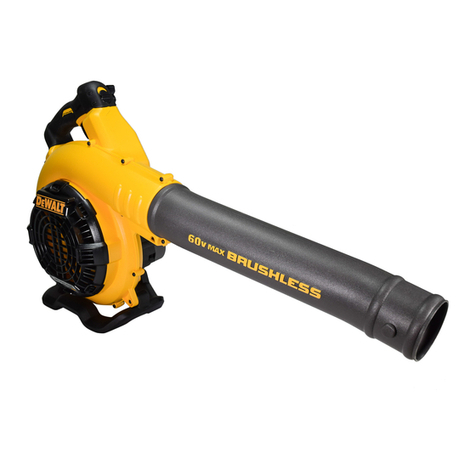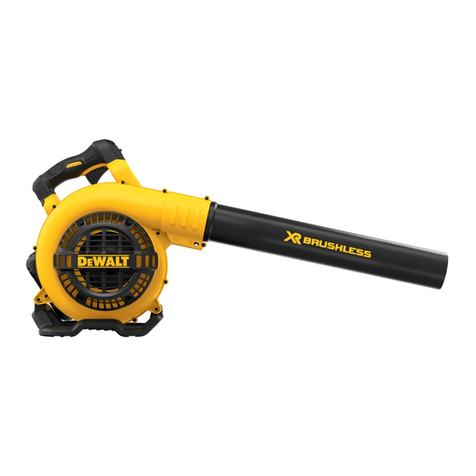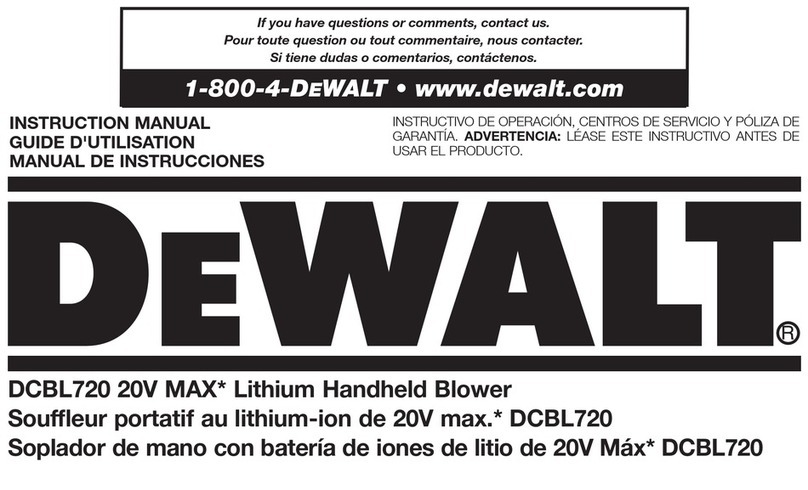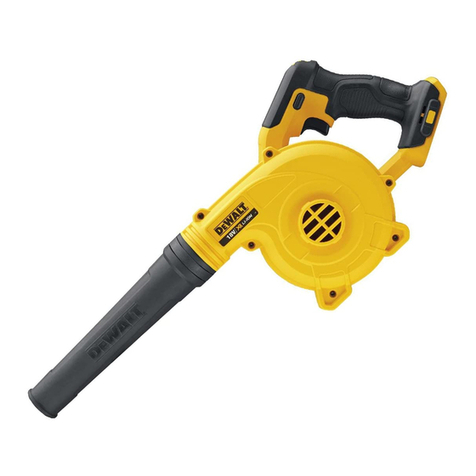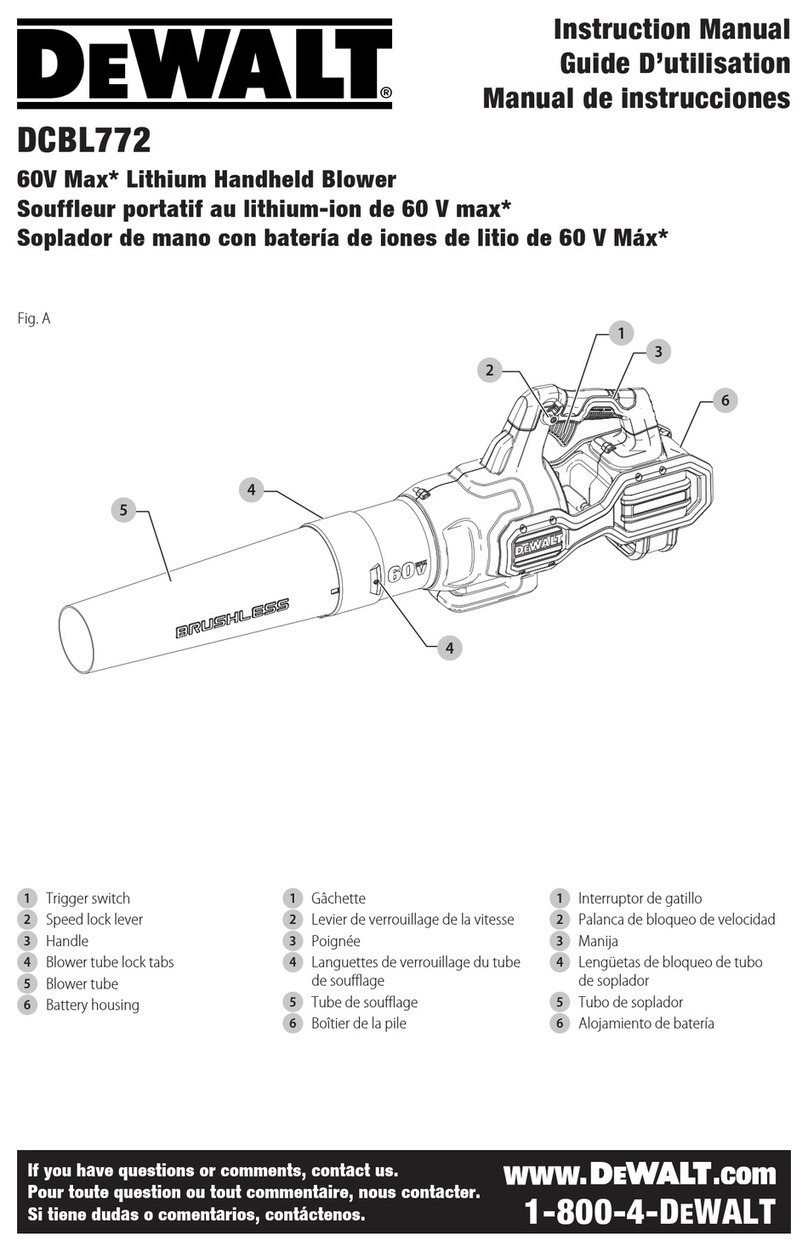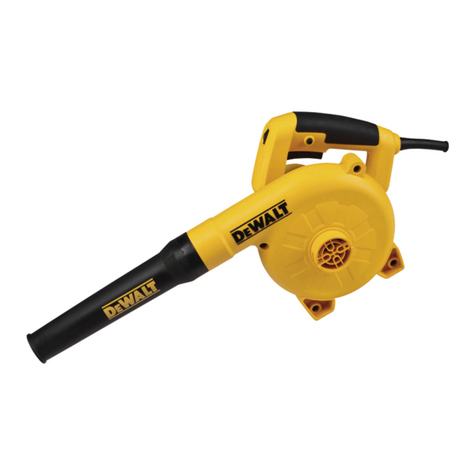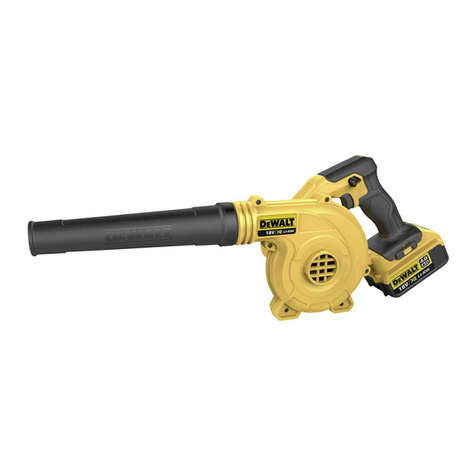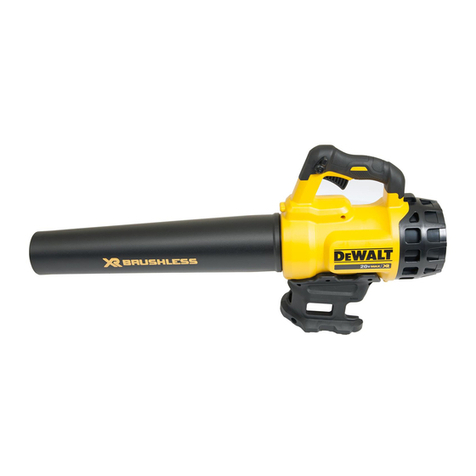2
English
•
DO NOT
put any objects into openings. Do not use with any
opening blocked; keep free of dust, lint, hair and everything that
may reduce air flow.
•
KEEP
hair, loose clothing, fingers, and all parts of body away from
openings and moving parts.
•
DO NOT
immerse any part of the unit in liquid.
•
DO
NOT
handle charger, including charger plug, and charger
terminals with wet hands.
•
KEEP
CHILDREN, BYSTANDERS AND ANIMALS AWAY
from
the work area a minimum of 30 feet (10 meters) when starting or
operating the unit.
•
INSPECT
THE AREA
before using the unit. Remove all debris and
hard objects such as rocks, glass, wire, etc. that can ricochet, be
thrown, or otherwise cause injury or damage during operation.
•
USE ONLY
charger supplied by the manufacturer to recharge.
•
EXERCISE CARE
in handling batteries in order not to short the
battery with conducting materials such as rings, bracelets and
keys. The battery or conductor may overheat and cause burns.
•
DO NOT OPEN OR MUTILATE
the batteries. Released electrolyte
is corrosive and may cause damage to the eyes or skin. It may be
toxic if swallowed.
WARNING: Always wear proper personal
hearing protection that conforms to ANSI S12.6 (S3.19) during
use.
Under some conditions and duration of use, noise from this
product may contribute to hearing loss.
WARNING: ALWAYS USE SAFETY GLASSES.
Everyday eyeglasses are NOT safety glasses. Also use face or dust mask if
cutting operation is dusty. ALWAYS WEAR CERTIFIED SAFETY EQUIPMENT:
• ANSI Z87.1 eye protection (CAN/CSA Z94.3),
• ANSI S12.6 (S3.19) hearing protection,
• NIOSH/OSHA/MSHA respiratory protection.
•
DISCONNECT
battery pack from unit or place the switch in the
locked or off position before making any adjustments, changing
accessories, or storing the unit. Such preventative safety measures
reduce the risk of starting the unit accidentally.
•
ALWAYS WEAR EYE PROTECTION –
Wear safety glasses or
goggles that conforms to ANSI Z87.1 (CAN/CSA Z94.3) at all times
when this unit is in use. Also use face or dust mask. Safety glasses
are available at extra cost at your local DeWALT Service Center or
authorized service facility.
•
DO NOT
place outlet of blower near eyes or ears when operating.
•
STORE IDLE UNITS.
When not in use, the unit should be stored in
a dry, high or locked-up place - out of reach of children.
•
DON’T OVERREACH.
Keep proper footing and balance at all times.
•
MAINTAIN UNIT WITH CARE.
Keep unit clean for best and safest
performance. Follow instructions for proper maintenance.
•
DO NOT
attempt to repair the blower. To assure product safety
and reliability, repairs, maintenance, and adjustments should
be performed by DeWALT service centers or authorized service
centers, always using DeWALT replacement parts.
• DO NOT operate blower in a gaseous or explosive atmosphere. Motors
in these units normally spark, and the sparks might ignite fumes.
• AVOID DANGEROUS ENVIRONMENTAL CONDITIONS – Do not
use electric units in damp or wet locations. Don’t use the unit in the rain.
•
STAY ALERT -
Watch what you are doing. Use common sense. Do
not operate unit when you are tired.
•
USE THE RIGHT UNIT –
Do not use this unit for any job except
that for which it is intended.
•
USE EXTRA CARE
when cleaning on stairs.
• DO NOT allow to be used as a toy. Close attention is necessary when
used by or near children. Not recommended for use by children.
• DO NOT attempt to clear clogs from unit without first removing battery.
•
USE ONLY
as described in this manual. Use only manufacturer’s
recommended attachments.





